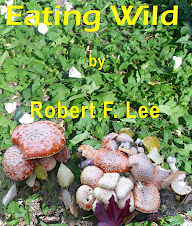Corn silk may now be associated with a healthy lifestyle and medicinal benefit, but, as an adolescent, my memories of the use of corn silk was as a cigarette alternative. I have been told tales of those people in the Dirty Thirties who regularly rolled dried corn silk into cigarette papers, since tobacco was prohibitively expensive. While I do not recommend this practice today, the anecdote illustrates that desperate people use creative tactics to achieve an end!
Corn silk, ironically, has significant medicinal benefit and use, unlike tobacco. It is used to treat cystitis, prostatitis and urethritis, and has a long history in the treatment of bedwetting, kidney stones, jaundice and oedema. Studies have found that it reduces blood clotting time and blood pressure. As a gentle treatment for gout, it rivals the effectiveness of cherries. (As a gout sufferer, I can attest to the effectiveness of both.)
Rick in Vitamin K, it is a good diuretic, eliminating fluids but not decreasing the body’s potassium. Since it contains significant potassium, whatever is lost through the diuretic effect of the corn silk is more than offset but its input levels.
While the most popular method of consuming corn silk is to make a tea or infusion by steeping a handful of fresh or dried silk in two cups of boiled water, there is a wealth of other options for using this valuable grass in recipes.
I dry corn silk (preferably in open air, as opposed to a dehydrator), then crumble a small handful over my cereal, similar to sprinkling flax seed over cereals. It has a slightly sweet and nutty taste. In early summer, I harvest the silk fresh, chop it fine, and use it in salads. I have found that the full silk is quite stringy, unless chopped. In soups, I use chopped silk along with cream corn and finely chopped potatoes, parsley, a little tarragon, pepper, chopped onions and cayenne. On occasion, I will toss in chopped zucchini or pumpkin and a little pumpkin spice as an alternative. Dried & crushed corn silk also works well in breading for chicken and pork chops.
Ideally, the silk should be harvested just prior to the ears forming, so that the pollen is captured, as well. Because of its high moisture content, do not store in plastic, and dry any silk that you will not be using immediately. To dry corn silk, spread it thinly on a fibreglass screen in an area without direct sunlight, but moderate air movement. In a dehydrator, corn silk tends to clump.
There have been no significant reports of side effects regarding the consumption of corn silk. However, as in all foods and medicines, moderation is recommended.
Wednesday, July 20, 2011
Monday, July 4, 2011
Common Plantain: Nutrition And Medicinal Benefits
As in the old Timex watch ads, common plantain “takes a licking and keeps on ticking.” Commonly found on well-trodden paths, as well as gravelly soils and marginal wastelands, this plant, non-native to North America, is a survivor. Common plantain, while not as prolific or as invasive as dandelion, handles abuse quite well. In fact, last week, I used the leaves of a plantain plant that was growing in my driveway to treat a series of insect bites.
Common plantain not only has medicinal value, but is a great staple for diets focused on the harvest and consumption of wild plants. It, in early spring, is a fresh-tasting addition to a spring salad, is a great addition to a dinner plate as a boiled vegetable, and provides a flour-like paste from its psyllium seed stalks.
The flowers can be eaten raw, and taste something like a cross between a potato and a hazelnut. Because of its high psyllium content, the flower and seed stalk is an effective laxative, but also acts as a great thickener for soups and stews. These seed pods can be sun dried and used throughout the year.
As the summer progresses, the broad, heavy leaves of the common plantain develop thick veins and become quite stringy. Even when boiled, they remain fairly tough. At this point, it is best to use the leaves in an infusion, or as a stock for soups. Because of its high beta carotene and calcium content, it is valued throughout its growing season. However, we have successfully dried and crushed the leaves, and used them in winter as a spice in soups and as a garnish on meat, as well as a great home remedy for a number of health issues.
Common plantain is listed as astringent, emollient, anti-microbal, anti-viral and diuretic.
My father introduced me to common plantain as a child. My first medicinal encounter with the plant occurred when I developed a severe tooth abscess. Using a compress of plantain and white willow bark, I walked around for three days with a white sling around my face, but the toothache pain disappeared in the first day, and the swelling deflated shortly thereafter.
I have used it on wounds, to prevent infection, and have experimented with it on poison ivy, cuts, insect bites, rashes, and even on a few eruptions on my neck that my doctor has scheduled for removal, believing them to be pre-cancerous cells.
On poison ivy, the most effective relief came when I combined fresh garlic and crushed plantain in a poultice. Both the itch and the rash disappeared within three days, compared to other outbreaks that lasted seven to twelve days.
On cuts, I combine plantain with crushed horsetail (high silica content), and have found that the wounds heal quickly and that redness is reduced. Although a subjective observation, I have found less scarring when I apply crushed plantain.
Insect bites (I react severely to most bites, except for the stings of bees, wasps and hornets!), plantain works better than no treatment, but not as quickly as a simple raspberry or strawberry leaf compress.
The truly interesting result has occurred with my recent eruption of supposed melanoma nodules. Of the eight eruptions, five have disappeared, leading me to believe that they were not, as my doctor suspected, cancerous.
Common plantain, like many plants in the wild, have great nutritional as well as medicinal benefits. Unfortunately for most of us, these wonderful sources of free food and health largely are ignored. We would be well advised to follow the message of another old ad – the Fram filter ad. By choosing to ignore the advantages of wild harvesting, you pay a price. Your choice – you can pay now, or pay later!
Common plantain not only has medicinal value, but is a great staple for diets focused on the harvest and consumption of wild plants. It, in early spring, is a fresh-tasting addition to a spring salad, is a great addition to a dinner plate as a boiled vegetable, and provides a flour-like paste from its psyllium seed stalks.
The flowers can be eaten raw, and taste something like a cross between a potato and a hazelnut. Because of its high psyllium content, the flower and seed stalk is an effective laxative, but also acts as a great thickener for soups and stews. These seed pods can be sun dried and used throughout the year.
As the summer progresses, the broad, heavy leaves of the common plantain develop thick veins and become quite stringy. Even when boiled, they remain fairly tough. At this point, it is best to use the leaves in an infusion, or as a stock for soups. Because of its high beta carotene and calcium content, it is valued throughout its growing season. However, we have successfully dried and crushed the leaves, and used them in winter as a spice in soups and as a garnish on meat, as well as a great home remedy for a number of health issues.
Common plantain is listed as astringent, emollient, anti-microbal, anti-viral and diuretic.
My father introduced me to common plantain as a child. My first medicinal encounter with the plant occurred when I developed a severe tooth abscess. Using a compress of plantain and white willow bark, I walked around for three days with a white sling around my face, but the toothache pain disappeared in the first day, and the swelling deflated shortly thereafter.
I have used it on wounds, to prevent infection, and have experimented with it on poison ivy, cuts, insect bites, rashes, and even on a few eruptions on my neck that my doctor has scheduled for removal, believing them to be pre-cancerous cells.
On poison ivy, the most effective relief came when I combined fresh garlic and crushed plantain in a poultice. Both the itch and the rash disappeared within three days, compared to other outbreaks that lasted seven to twelve days.
On cuts, I combine plantain with crushed horsetail (high silica content), and have found that the wounds heal quickly and that redness is reduced. Although a subjective observation, I have found less scarring when I apply crushed plantain.
Insect bites (I react severely to most bites, except for the stings of bees, wasps and hornets!), plantain works better than no treatment, but not as quickly as a simple raspberry or strawberry leaf compress.
The truly interesting result has occurred with my recent eruption of supposed melanoma nodules. Of the eight eruptions, five have disappeared, leading me to believe that they were not, as my doctor suspected, cancerous.
Common plantain, like many plants in the wild, have great nutritional as well as medicinal benefits. Unfortunately for most of us, these wonderful sources of free food and health largely are ignored. We would be well advised to follow the message of another old ad – the Fram filter ad. By choosing to ignore the advantages of wild harvesting, you pay a price. Your choice – you can pay now, or pay later!
Labels:
common plantain,
medicinal,
plantain,
rose nutrition,
wild plant
Subscribe to:
Posts (Atom)

